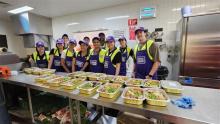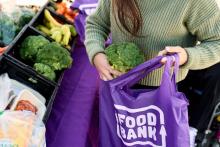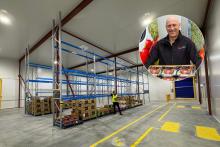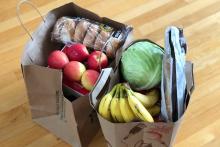
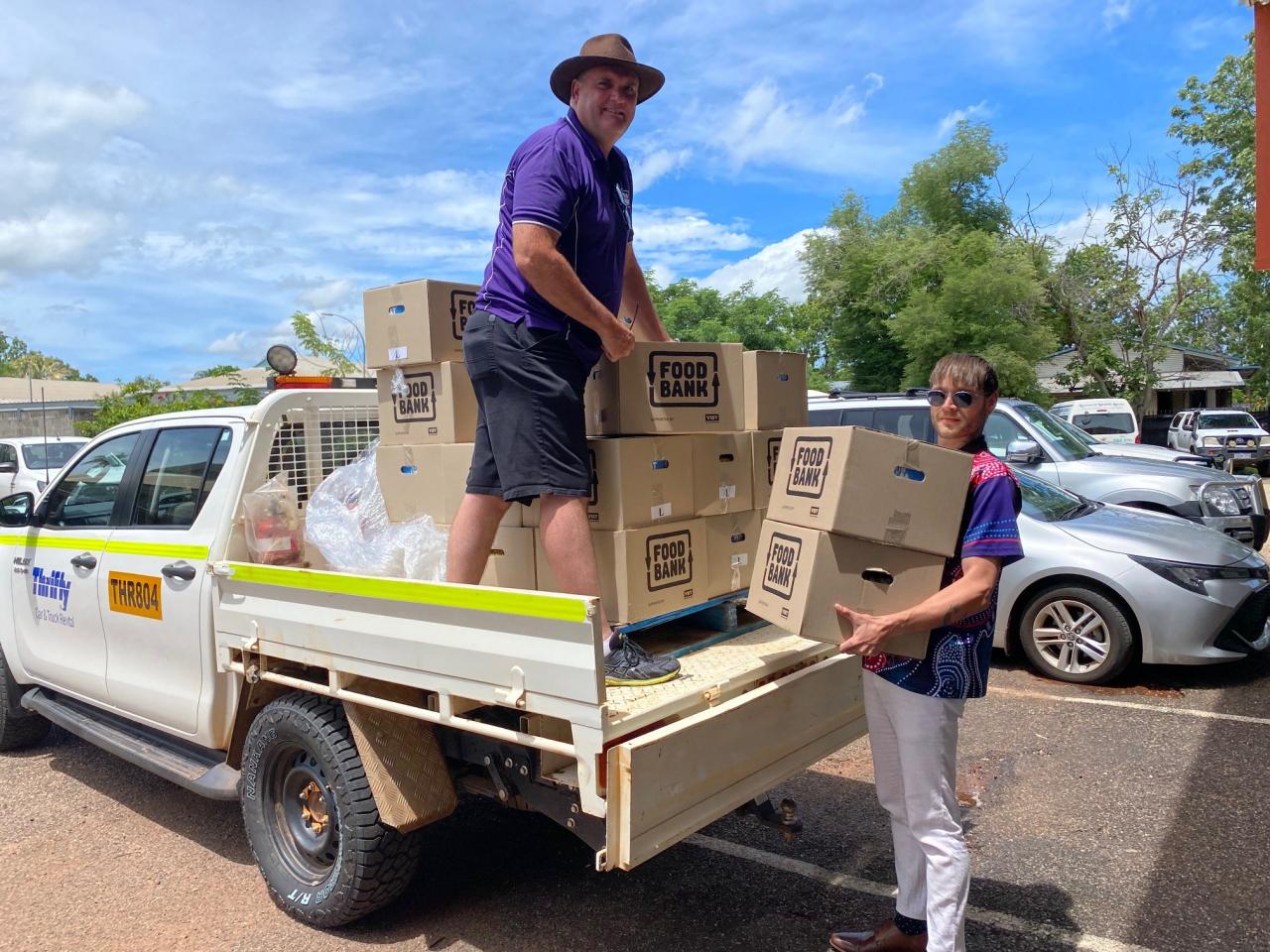
As if it wasn’t hard enough to supply the Kimberley and Pilbara regions with reliable supplies of fresh, healthy produce, when Tropical Cyclone Ellie arrived in late December, the situation was made even more challenging.
Foodbank WA volunteers were quick to react to the crisis in early January, packing hampers ready to go Broome to then be sent to areas directly affected by the Kimberley floods.
“At the start, we worked with the Government to get them to where they were needed,” said Foodbank WA’s CEO, Kate O’ Hara.
The natural disaster had damaged the Great Northern Highway cutting off a major supply route into the east Kimberley and adding considerably to the pressure on local organisations in that area to feed the community adequately.
“It was a huge logistical challenge, getting food to areas not directly impacted by the floods. Kununurra, normally home to 5,300 people and over 3,000km from Perth, experienced a surge in population as flooded communities moved to bigger towns,” said Ms O’Hara.
“The town also found itself cut off from its major supply route with the closure of parts of the Great Northern Highway. With supermarket shelves becoming increasingly bare, we worked alongside our partners both in Kununurra and nationally to ensure we could get food to those who needed it most.”
In collaboration with Foodbank South Australia/Northern Territory, Coles, Woolworths, Chevron, MG Corp (Kununurra traditional owners) and local agencies (Wunan, 54 Reasons, Anglicare, KNX Community Garden, Kununurra Shooting Stars), Foodbank WA was able organise to deliver 1,280 dry hampers and 13 tonnes of fresh produce over 4 deliveries.
With the road closures, the quickest supply route to Kununurra is from Adelaide through the Northern Territory. Coles stepped up and offered to transport the produce for free.
Woolworths donated 10,000 key staple items including noodles, corned beef and soup while Chevron Australia helped us cover the cost of food we have bought to ensure we have enough for the community.
With this incredible combined effort from multiple organisations, the first delivery arrived into the community on January 31, followed by three more over the following weeks. By the end of March, it’s estimated Foodbank WA will have distributed 1,280 dry hampers and 13 tonnes of fresh produce.
What the flood and subsequent knock-on effects demonstrate so starkly however is the high risk the Kimberley and Pilbara regions are at from food stress. Food insecurity is evident when individuals or households have limited or uncertain physical, social or economic access to affordable, sufficient, safe, nutritious and culturally-relevant food.
“This occurs when a household needs to spend more than 25% of their disposable income on food,” said Ms O’Hara. “WA’s north west regions have been identified as areas with a high likelihood of food stress, with 33% or an estimated 1,500 in the Newman community in need of affordable and nutritious food, while 19% or 1,000 people in the Kununurra community are in the same boat.”
The double whammy of the region not only being geographically isolated from major cities and annually facing dangerous weather systems means that food supplies are under threat when roads close.
“To buy a healthy basket of food in remote Western Australia costs 26% more than it does in Shenton Park or other metropolitan areas,” said Ms O’Hara.
Fortunately, Foodbank WA has a plan in place to address this ongoing struggle to put healthy and affordable food on the tables of those who call the northwest of WA home.
“We have designed a 10-year plan to create eight hubs supporting 20 remote communities in the North West, and to do so, we need $2.5m for each hub,” said Ms O’Hara
“Each hub will take approximately three years to be fully implemented and become self-sustainable, ensuring that food relief creates additional positive outcomes like local employment opportunities, community engagement through volunteer participation, waste management collaboration with local retailers and improved mental health outcomes and social cohesion.”
There are several stages involved in creating the hubs including agreeing the contents of hampers in consultation with the community, and the requirement of land and local producers to provide fresh produce, meat, prepared meals and key staples where affordable.
“By Stage 3 of the plan, we intend to reach remote communities in collaboration with native title groups, health and ranger agencies, and provide nutrition education programs aimed to provide the knowledge and skills to plan, prepare and cook healthy meals on a budget,” said Ms O’ Hara.
All of the above will only be possible with a joint effort from Foodbank WA alongside corporate and Government partners.
“The collaboration with Corporate and Government partners working alongside with local communities and traditional owners is the best pathway to get food to West Aussies living in the North West who need it the most,” said Ms O’ Hara.
“Distributing urgent food supplies to a community of 2,500km north of Perth, especially with the threat of road closures, is a challenge. Today we are incredibly thankful for the support of our partners to ensure we get food to those who need it for our School Breakfast Program. Looking ahead, we will need much more support to achieve the result we all want for these communities.
“With this new plan, we can provide long-term food relief support that enables better nutrition, for the community and surrounding Kimberley region.”







